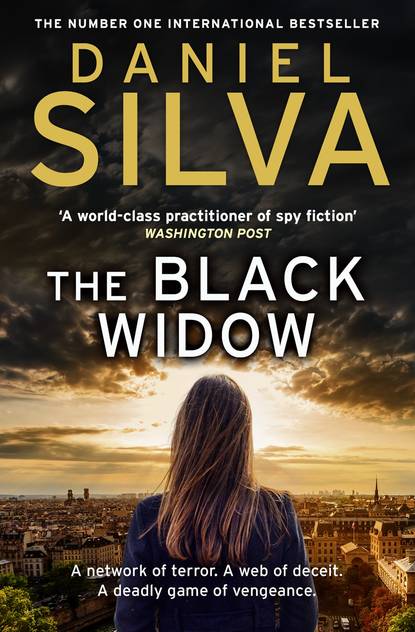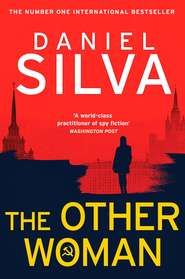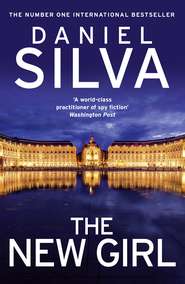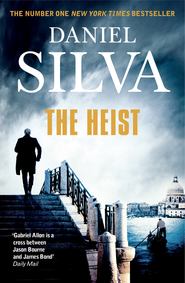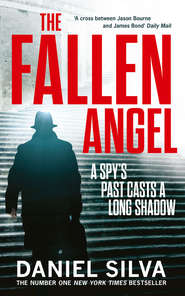По всем вопросам обращайтесь на: info@litportal.ru
(©) 2003-2024.
✖
The Black Widow
Настройки чтения
Размер шрифта
Высота строк
Поля
Lastly, there was the small matter of what to call Hannah’s endeavor. Rachel Lévy, head of the center’s publicity department, thought blandness and a trace of obfuscation would be the best approach, but Hannah overruled her. When synagogues were burning, she said, caution was a luxury they could not afford. It was Hannah’s wish to sound an alarm, to issue a clarion call for action. She scribbled a few words on a slip of notepaper and placed it on Rachel’s cluttered desk.
“That should get their attention.”
At that point, no one of any consequence had agreed to attend—no one but a gadfly American blogger and cable television commentator who would have accepted an invitation to his own funeral. But then Arthur Goldman, the eminent historian of anti-Semitism from Cambridge, said he might be willing to make the trip down to Paris—provided, of course, that Hannah agreed to put him up for two nights in his favorite suite at the Crillon. With Goldman’s commitment, Hannah snared Maxwell Strauss from Yale, who never passed up an opportunity to appear on the same stage as his rival. The rest of the participants quickly fell into place. The director of the United States Holocaust Memorial Museum signed on, as did two important memoirists of survival and an expert on the French Holocaust from Yad Vashem. A novelist was added, more for her immense popularity than her historical insight, along with a politician from the French far right who rarely had a kind word to say about anyone. Several Muslim spiritual and community leaders were invited to attend. All declined. So, too, did the interior minister. Alain Lambert broke the news to Hannah personally.
“Did you really think he would attend a conference with so provocative a title?”
“Heaven forbid your master ever do anything provocative, Alain.”
“What about security?”
“We’ve always looked after ourselves.”
“No Israelis, Hannah. It will give the entire affair a bad odor.”
Rachel Lévy issued the press release the next day. The media were invited to cover the conference; a limited number of seats were made available to the public. A few hours later, on a busy street in the Twentieth Arrondissement, a religious Jew was set upon by a man with a hatchet and gravely wounded. Before making his escape, the assailant waved the bloody weapon and shouted, “Khaybar, Khaybar, ya-Yahud!” The police were said to be investigating.
For reasons of both haste and security, a period of just five busy days separated the press release from the start of the conference itself. Consequently, Hannah waited until the last minute to prepare her opening remarks. On the eve of the gathering, she sat alone in her library, a pen scratching furiously across a yellow legal pad.
It was, she thought, an appropriate place to compose such a document, for the library had once been her grandfather’s. Born in the Lublin district of Poland, he had fled to Paris in 1936, four years before the arrival of Hitler’s Wehrmacht. On the morning of July 16, 1942—the day known as Jeudi Noir, or Black Thursday—French police officers carrying stacks of blue deportation cards arrested Isaac Weinberg and his wife, along with nearly thirteen thousand other foreign-born Jews. Isaac Weinberg had managed to conceal two things before the dreaded knock at the door: his only child, a young son named Marc, and the van Gogh. Marc Weinberg survived the war in hiding, and in 1952 he managed to reclaim the apartment on the rue Pavée from the French family who had settled into it after Jeudi Noir. Miraculously, the painting was precisely where Isaac Weinberg had left it, hidden under the floorboards of the library, beneath the desk where Hannah now sat.
Three weeks after their arrest, Isaac Weinberg and his wife were deported to Auschwitz and gassed upon arrival. They were just two of the more than 75,000 Jews from France who perished in the death camps of Nazi Germany, a permanent stain on French history. But could it ever happen again? And was it time for the 475,000 Jews of France, the third-largest Jewish community in the world, to pack their bags and leave? This was the question Hannah had posed in the title of her conference. Many Jews had already abandoned France. Fifteen thousand had immigrated to Israel during the past year, and more were leaving every day. Hannah, however, had no plans to join them. Regardless of what her enemies might say, she considered herself French first and Jewish second. The idea of living somewhere other than the Fourth Arrondissement of Paris was abhorrent to her. Still, she felt duty-bound to warn her fellow French Jews of the gathering storm. The threat was not yet existential. But when a building is burning, Hannah wrote now, the best course of action is to find the nearest exit.
She finished a first draft shortly before midnight. It was too strident, she thought, and perhaps a bit too angry. She softened its roughest edges and added several depressing statistics to bolster her case. Then she typed it into her laptop, printed a copy, and managed to find her bed by two. The alarm woke her at seven; she drank a bowl of café au lait on the way to the shower. Afterward, she sat before her vanity in a toweling robe, staring at her face in the mirror. Her father, in a moment of brutal honesty, had once said of his only daughter that God had been generous when giving her brains but parsimonious with her looks. Her hair was wavy and dark and streaked with gray that she had allowed to encroach without resistance. Her nose was prominent and aquiline, her eyes were wide and brown. It had never been a particularly pretty face, but no one had ever mistaken her for a fool, either. At a moment like this, she thought, her looks were an asset.
She applied a bit of makeup to hide the circles beneath her eyes and arranged her hair with more care than usual. Then she dressed quickly—a dark woolen skirt and sweater, dark stockings, a pair of low-heeled pumps—and headed downstairs. After crossing the interior courtyard, she opened the main doorway of the building a few inches and peered into the street. It was a few minutes after eight; Parisians and tourists were making their way swiftly along the pavement beneath a gray early-spring sky. No one, it seemed, was waiting for an intelligent-looking woman in her mid-fifties to emerge from the apartment building at Number 24.
She did so now and headed past a row of chic clothing boutiques to the rue des Rosiers. For a few paces it seemed like an ordinary Paris street in a rather upscale arrondissement. Then Hannah came upon a kosher pizzeria and several falafel stands with signs written in Hebrew, and the true character of the street was revealed. She imagined how it must have looked early on the morning of Jeudi Noir. The helpless detainees clambering into open-top trucks, each clutching their allotted one suitcase. The neighbors staring down from open windows, some silent and ashamed, others barely able to contain their glee at the misfortune of a reviled minority. Hannah clung to this image—the image of Parisians waving good-bye to doomed Jews—as she moved through the flat light, her heels tapping rhythmically over the paving stones.
The Weinberg Center stood at the quiet end of the street, in a four-story building that before the war had housed a Yiddish-language newspaper and a coat factory. A line of several dozen people stretched from the doorway where two dark-suited security guards, young men in their twenties, were carefully searching all those who wished to enter. Hannah slipped past them and made her way upstairs to the VIP reception. Arthur Goldman and Max Strauss were eyeing each other warily across the room over cups of weak américain. The famous novelist was speaking seriously to one of the memoirists; the head of the Holocaust Museum was exchanging notes with the specialist from Yad Vashem, who was a longtime friend. Only the gadfly American commentator seemed to have no one to talk to. He was piling croissants and brioche onto his plate as though he hadn’t seen food in days. “Don’t worry,” said Hannah, smiling. “We’re planning to take a break for lunch.”
She spent a moment or two with each of the panelists before heading down the hall to her office. Alone, she reread her opening remarks until Rachel Lévy poked her head through the doorway and pointed to her wristwatch.
“What’s the crowd like?” asked Hannah.
“More than we can handle.”
“And the media?”
“Everyone came, including the New York Times and the BBC.”
Just then, Hannah’s mobile phone chimed. It was a text from Alain Lambert at the Interior Ministry. Reading it, she frowned.
“What does it say?” asked Rachel.
“Just Alain being Alain.”
Hannah placed the mobile on her desk and, gathering her papers, went out. Rachel Lévy waited until she was gone before picking up the mobile and entering Hannah’s not-so-secret security code. The text from Alain Lambert appeared, four words in length.
BE CAREFUL MY DEAR …
The Weinberg Center had insufficient space for a formal auditorium, but the room on its uppermost floor was one of the finest in the Marais. A row of greenhouse-like windows gave it a magnificent view across the rooftops toward the Seine, and upon its walls hung several large black-and-white photographs of life in the district before the morning of Jeudi Noir. All those depicted had perished in the Holocaust, including Isaac Weinberg, who had been photographed in his library three months before disaster struck. As Hannah passed the picture, she trailed a forefinger over its surface, as she had touched the brushstrokes of the van Gogh. Only Hannah knew of the secret connection between the painting, her grandfather, and the center that bore his name. No, she thought suddenly. That wasn’t quite true. The restorer knew of the connection, too.
A long rectangular table had been placed atop a raised platform in front of the windows, and two hundred chairs had been arranged on the open floor like soldiers on a parade ground. Each of the chairs was occupied, and another hundred or so spectators lined the rear wall. Hannah took her assigned seat—she had volunteered to serve as a separation barrier between Goldman and Strauss—and listened as Rachel Lévy instructed the audience to silence their mobile phones. Finally, her turn came to speak. She switched on her microphone and looked down at the first line of her opening statement. It is a national tragedy that a conference such as this is even taking place . . . And then she heard the sound in the street below, a popping, like the snap of firecrackers, followed by a man shouting in Arabic.
“Khaybar, Khaybar, ya-Yahud!”
Hannah stepped from the platform and moved quickly to the floor-to-ceiling windows.
“Dear God,” she whispered.
Turning, she shouted at the panelists to move away from the windows, but the roar of the detonation swallowed her warning. Instantly, the room was a tornado of flying glass, chairs, masonry, articles of clothing, and human limbs. Hannah knew she was toppling forward, though she had no sense of whether she was rising or falling. Once, she thought she glimpsed Rachel Lévy spinning like a ballerina. Then Rachel, like all else, was lost to her.
At last, she came to rest, perhaps on her back, perhaps on her side, perhaps in the street, perhaps in a tomb of brick and concrete. The silence was oppressive. So, too, was the smoke and the dust. She tried to wipe the grit from her eyes, but her right arm would not respond. Then Hannah realized she had no right arm. Nor did she seem to have a right leg. She turned her head slightly and saw a man lying beside her. “Professor Strauss, is that you?” But the man said nothing. He was dead. Soon, thought Hannah, I’ll be dead, too.
All at once she was frightfully cold. She supposed it was the loss of blood. Or perhaps it was the breath of wind that briefly cleared the black smoke from in front of her face. She realized then that she and the man who might have been Professor Strauss were lying together amid the rubble in the rue des Rosiers. And standing over them, peering downward over the barrel of a military-style automatic rifle, was a figure dressed entirely in black. A balaclava masked the face, but the eyes were visible. They were shockingly beautiful, two kaleidoscopes of hazel and copper. “Please,” said Hannah softly, but the eyes behind the mask only brightened with zeal. Then there was a flash of white light, and Hannah found herself walking along a hallway, her missing limbs restored. She passed through the door of her childhood bedroom and groped in the darkness for the van Gogh. But the painting, it seemed, was already gone. And in a moment Hannah was gone, too.
2 (#ulink_86b70fd4-ee25-5f49-818d-25ac3b019842)
RUE DE GRENELLE, PARIS (#ulink_86b70fd4-ee25-5f49-818d-25ac3b019842)
LATER, THE FRENCH AUTHORITIES WOULD determine that the bomb weighed in excess of five hundred kilograms. It had been contained in a white Renault Trafic transit van and was detonated, according to numerous security cameras along the street, at ten o’clock precisely, the scheduled start time of the Weinberg Center conference. The attackers, it seemed, were nothing if not punctual.
In retrospect, the weapon was unnecessarily large for so modest a target. The French experts concluded that a charge of perhaps two hundred kilograms would have been more than sufficient to level the offices and kill or wound all those inside. At five hundred kilograms, however, the bomb toppled buildings and shattered windows the entire length of the rue des Rosiers. The shock wave was so violent—Paris actually recorded an earthquake for the first time in longer than anyone could remember—that the damage extended below ground as well. Water and gas mains cracked throughout the arrondissement, and a Métro train jumped the tracks while approaching the station at the Hôtel de Ville. More than two hundred passengers were injured, many severely. The Paris police initially thought the train had been bombed, too, and in response they ordered an evacuation of the entire Métro system. Life in the city quickly ground to a halt. For the attackers, it was an unexpected windfall.
The enormous force of the blast dug a crater in the rue des Rosiers twenty feet in depth. Nothing remained of the Renault Trafic, though the left rear cargo door, curiously intact, was found floating in the Seine near Notre-Dame, having traveled a distance of nearly a kilometer. In time, investigators would determine that the vehicle had been stolen in Vaulx-en-Velin, a bleak Muslim-majority suburb of Lyon. It had been driven to Paris on the eve of the attack—by whom, it was never established—and left outside a kitchen-and-bath store on the boulevard Saint-Germain. There it would remain until ten minutes past eight the following morning, when a man collected it. He was clean-shaven, approximately five foot ten inches in height, and was wearing a billed cap and sunglasses. He drove the streets of central Paris—aimlessly, or so it appeared—until nine twenty, when he picked up an accomplice outside the Gare du Nord. Initially, the French police and intelligence services operated under the assumption that the second attacker was male, too. Later, after analyzing all available video images, they concluded that the accomplice was in fact a woman.
By the time the Renault reached the Marais, both occupants had concealed their faces with balaclava masks. And when they emerged from the vehicle outside the Weinberg Center, both were heavily armed with Kalashnikov assault rifles, handguns, and grenades. The center’s two security guards were killed instantly, as were four other people who had yet to be cleared into the building. A passerby bravely attempted to intervene and was mercilessly slaughtered. The remaining pedestrians in the narrow street wisely fled.
The gunfire outside the Weinberg Center ceased at 9:59:30, and the two masked attackers moved calmly west along the rue des Rosiers to the rue Vieille-du-Temple, where they entered a popular boulangerie. Eight customers were waiting in an orderly queue. All were killed, including the woman behind the counter, who pleaded for her life before being shot several times.
It was at that instant, as the woman was collapsing to the floor, that the bomb inside the van exploded. The force of the blast shattered the windows of the boulangerie, but otherwise the building remained undamaged. The two attackers did not immediately flee the carnage they had inflicted. Instead, they returned to the rue des Rosiers, where a single surviving security camera recorded them moving methodically through the debris, executing the wounded and the dying. Among their victims was Hannah Weinberg, who was shot twice despite the fact that she had almost no chance of survival. The attackers’ cruelty was matched only by their competence. The woman was seen calmly clearing a jammed round from her Kalashnikov before killing a badly wounded man who, a moment earlier, had been seated on the fourth floor of the building.
For several hours after the attack, the Marais remained cordoned off, inaccessible to all but emergency workers and investigators. Finally, in late afternoon, when the last of the fires had been extinguished and the site was determined to be free of secondary explosives, the French president arrived. After touring the devastation, he declared it “a Holocaust in the heart of Paris.” The remark did not meet with a favorable reception in some of the more restive banlieues. In one, there erupted a spontaneous celebration that was quickly snuffed out by riot police. Most of the newspapers ignored the incident. A senior French police official called it “an unpleasant distraction” from the immediate task at hand, which was finding the perpetrators.
Their escape from the Marais, like everything else about the operation, had been meticulously planned and executed. A Peugeot Satelis motorbike had been left for them on a nearby street, along with a pair of black helmets. They traveled north, the male driving, the woman clinging to his waist, passing unnoticed through the stream of approaching police cars and ambulances. A traffic camera photographed them for the last time near the hamlet of Villeron, in the Val-d’Oise department. By midday they were the targets of the largest manhunt in French history.
The National Police and the gendarmerie saw to the roadblocks, the identity checks, the smashed windows of abandoned warehouses, and the severed padlocks of suspected hideouts. But inside a graceful old building located on the rue de Grenelle, eighty-four men and women were engaged in a search of a far different kind. Known only as the Alpha Group, they were members of a secret unit of the DGSI, France’s internal security service. The Group, as it was known informally, had been formed six years earlier, in the aftermath of a jihadist suicide bombing outside a landmark restaurant on the Avenue des Champs-Élysées. It specialized in human penetration of France’s sprawling jihadist underground and had been granted the authority to take “active measures” to remove potential Islamic terrorists from circulation before the Islamic terrorists could take active measures against the Republic or its citizenry. It was said of Paul Rousseau, Alpha Group’s chief, that he had plotted more bombings than Osama bin Laden, a charge he did not dispute, though he was quick to point out that none of his bombs actually exploded. The officers of Alpha Group were skilled practitioners in the art of deception. And Paul Rousseau was their undisputed leader and lodestar.
With his tweed jackets, tousled gray hair, and ever-present pipe, Rousseau seemed more suited to the role of absentminded professor than ruthless secret policeman, and not without good reason. Academia was where he began his career and where, in darker moments, he sometimes longed to return. A respected scholar of nineteenth-century French literature, Rousseau had been serving on the faculty of Paris-Sorbonne University when a friend in French intelligence asked him to take a job with the DST, France’s internal security service. The year was 1983, and the country was beset by a wave of bombings and assassinations carried out by the left-wing terrorist group known as Direct Action. Rousseau joined a unit dedicated to Direct Action’s destruction and, with a series of brilliant operations, brought the group to its knees.
He remained with the DST, battling successive waves of leftist and Middle East–based terrorism, until 2004, when his beloved wife Collette died after a long struggle with leukemia. Inconsolable, he retired to his modest villa in the Luberon and commenced work on a planned multivolume biography of Proust. Then came the bombing on the Champs-Élysées. Rousseau agreed to lay down his pen and return to the fight, but only on one condition. He had no interest in tailing suspected terrorists, listening to their telephone conversations, or reading their maniacal musings on the Internet. He wanted to go on offense. The chief agreed, as did the interior minister, and Alpha Group was born. In the six years of its existence, it had foiled more than a dozen major attacks on French soil. Rousseau viewed the bombing of the Weinberg Center not merely as a failure of intelligence but as a personal affront. Late that afternoon, with the French capital in turmoil, he rang the chief of the DGSI to offer his resignation. The chief, of course, refused it. “But for your penance,” he said, “you shall find the monster responsible for this outrage and bring me his head on a plate.”
Rousseau did not care for the allusion, for he had no intention of emulating the conduct of the very creatures he was fighting. Even so, he and his unit threw themselves into the task with a devotion that matched the religious zealotry of their adversaries. Alpha Group’s specialty was the human factor, and it was to humans they turned for information. In cafés, train stations, and back alleys across the country, Rousseau’s case officers met quietly with their agents of penetration—the preachers, the recruiters, the streetwise hustlers, the well-meaning moderates, the blank-eyed lost souls who had found a home in radical Islam’s global Ummah of death. Some spied out of conscience. Others spied for money. And there were some who spied because Rousseau and his operatives had given them no other choice. Not one claimed to know that an attack had been in the planning—not even the hustlers, who claimed to know everything, especially when money was involved. Nor could any of Alpha Group’s assets identify the two perpetrators. It was possible they were self-starters, lone wolves, followers of a leaderless jihad who had constructed a five-hundred-kilogram bomb under the noses of French intelligence and then delivered it expertly to their target. Possible, thought Rousseau, but highly unlikely. Somewhere, there was an operational mastermind, a man who had conceived the attack, recruited the operatives, and guided them skillfully to their target. And it was the head of this man that Paul Rousseau would deliver to his chief.
And so, as the whole of the French security establishment searched for the two perpetrators of the Weinberg Center attack, Rousseau’s gaze was already fixed resolutely upon a distant shore. Like all good captains in times of trouble, he remained on the bridge of his vessel, which in Rousseau’s case was his office on the fifth floor. An air of academic clutter hung over the room, along with the fruited scent of Rousseau’s pipe tobacco, a habit he indulged in violation of numerous official edicts regarding smoking in government offices. Beneath his bulletproof windows—they had been forced upon him by his chief—lay the intersection of the rue de Grenelle and the tranquil little rue Amélie. The building itself had no street entrance, only a black gate that gave onto a small courtyard and car park. A discreet brass plaque proclaimed that the building housed something called the International Society for French Literature, a particularly Rousseauian touch. For the sake of the unit’s cover, it published a thin quarterly, which Rousseau insisted on editing himself. At last count it had a readership of twelve. All had been thoroughly vetted.
Inside the building, however, all subterfuge ended. The technical support staff occupied the basement; the watchers, the ground floor. On the second floor was Alpha Group’s overflowing Registry—Rousseau preferred old-fashioned paper dossiers to digital files—and the third and fourth floors were the preserve of the agent runners. Most came and went through the gate on the rue de Grenelle, either on foot or by government car. Others entered through a secret passageway linking the building and the dowdy little antique shop next door, which was owned by an elderly Frenchman who had served in a secret capacity during the war in Algeria. Paul Rousseau was the only member of Alpha Group who had been allowed to read the shopkeeper’s appalling file.





